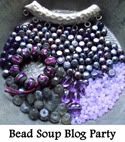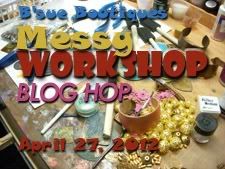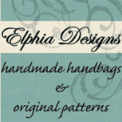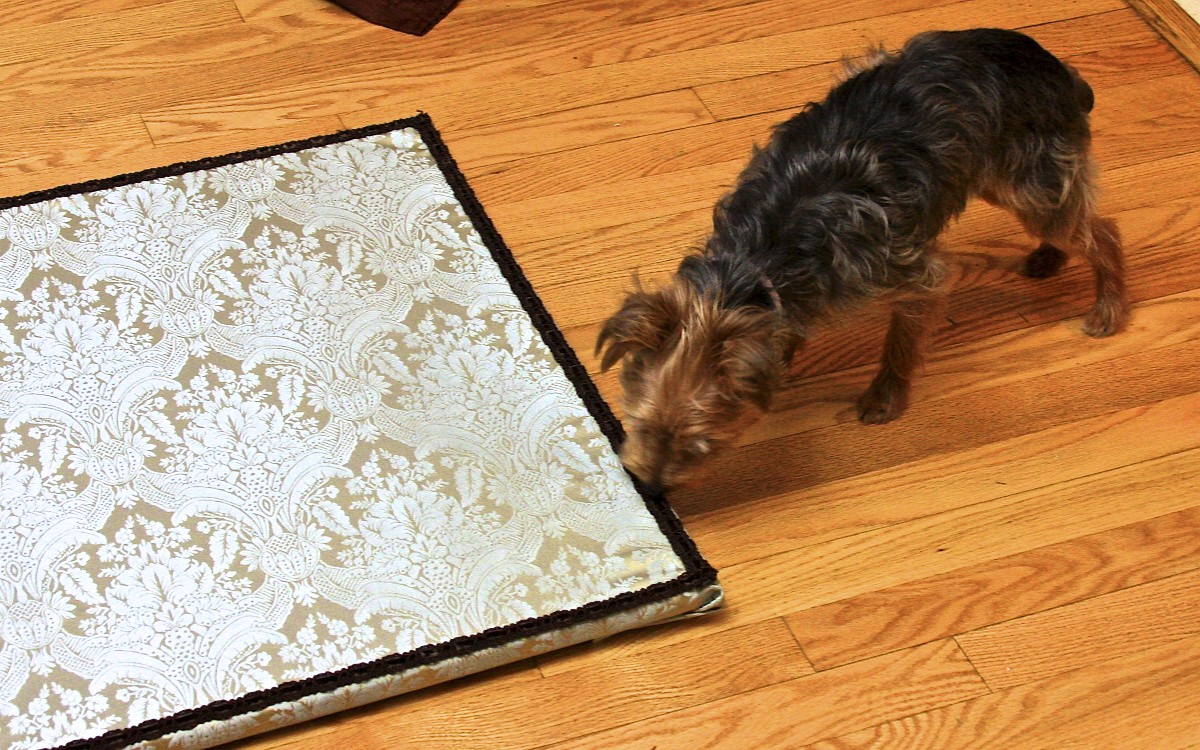
Faux Opal
Opal is thought by many to be one of the loveliest of the gemstones. The most commonly recognized is probably the white opal, but there are also black opals, fire opals, milk opals, boulder opals, and others. Polymer clay can cleverly emulate many natural materials, and luckily for us, opal is one of them. So even if you hold with the old superstition that it's bad luck to wear opals, you can still have a reasonable facsimile of this beautifully fiery gemstone with the help of a little polymer clay.
 Premo Translucent (or any translucent clay)
Premo Translucent (or any translucent clay) - Premo Frost (aka Bleached Translucent)
- This particular type of clay is thought to be the clearest and least likely to yellow during curing. If you don't have Premo Frost, use any translucent polymer clay.
- Tiny bits of colored clay or alcohol ink
- Possible colors are pink, salmon, peach, yellow-green, green, turquoise, blue, and violet-or any other colors you like.
- A variety of heat-resistant glitters-- If you are unsure of how your glitter will react to heat, it is best to test it by mixing it into a tiny bit of clay and curing. (Keep these test bits to remind you of how the glitter looks in translucent clay.)
- Confetti-style iridescent "flake" glitter
- Arnold Grummer's Iridescent Flakes-- papermaking supply found at most craft stores
- Buffalo Snow-- faux snow product found in the Christmas department at Michaels
- Rauch Sparkle Flakes-faux snow product found in the Christmas department at Wal-Mart
- Any other iridescent, confetti-style flake glitter. Look where craft glitter, papermaking glitter, party confetti, and decorative holiday "snow" is sold.
- Any opalescent mylar raffia, strands of opalescent mylar (gift bag stuffing, Easter basket "grass"), opalescent mylar sheets, pearlized wrapping paper, etc. can be cut into the desired shapes and sizes.
- Ultra-fine prismatic and/or holographic glitter
- Regular-sized glitter
- Use any size, shape, and color you like, but generally prismatic, holographic, crystal, iridescent, or pink/salmon glitters look the most authentic.
- Novelty glitter
- Unusually shaped glitter (heart-shaped, star-shaped, etc.) can be added to the mix for a fun touch if you aren't concerned with ultimate realism.
- Confetti-style iridescent "flake" glitter
- Interference Mica Powder (optional)
- Pearl-ex or similar products have interference colors that give an interesting "now you see it, now you don't" shimmer. Try interference powders in violet, green, gold, blue, or any other color you like.
- Polymer clay-friendly finish and a paintbrush (optional)
- Such as Varathane, Future, Minwax Water-based Polycrylic, Sculpey Glaze, Fimo Lacquer, etc.
- Work surface
- Latex, vinyl or nitrile gloves (optional, but they cut down on fingerprints)
- Pasta machine or brayer
- Bowl for mixing glitters
- Craft knife
- Clay shaper or similar tool (optional)
- Piercing tool (for beads-not necessary for cabochons)
- Oven (plus paper-lined cookie sheet/bead rack, thermometer, and timer)
- Bowl of ice water (after baking)
- Wet-dry sandpaper (320, 400, 600, 800, 1000, etc.) (optional)
- Electric buffing wheel or denim or muslin polishing rag (optional)
 Tint the portions of translucent clay using either tiny bits of colored clay or a drop or two of alcohol ink. Go slowly and don't make the colors too dark. Pastels make the most realistic white opals, and the colors will intensify somewhat during baking. Of course, if you want darker colors, those can be lovely, too. (See Techniques for tips on tinting clay with alcohol inks and color mixing.) Set the clay aside when you're satisfied with your colors. (If you'd rather have no colors at all, you don't have to tint the translucent clay. Just be aware that most translucent clay tends to amber somewhat during baking, so it may not turn out perfectly white even if you leave it uncolored.)
Tint the portions of translucent clay using either tiny bits of colored clay or a drop or two of alcohol ink. Go slowly and don't make the colors too dark. Pastels make the most realistic white opals, and the colors will intensify somewhat during baking. Of course, if you want darker colors, those can be lovely, too. (See Techniques for tips on tinting clay with alcohol inks and color mixing.) Set the clay aside when you're satisfied with your colors. (If you'd rather have no colors at all, you don't have to tint the translucent clay. Just be aware that most translucent clay tends to amber somewhat during baking, so it may not turn out perfectly white even if you leave it uncolored.)  Sprinkle some of each of your glitters into a small bowl. Mix them together. (If you prefer, you can leave the confetti glitter out of this mix. If you do decide to include it, remember that with this larger-sized glitter "less is more".)
Sprinkle some of each of your glitters into a small bowl. Mix them together. (If you prefer, you can leave the confetti glitter out of this mix. If you do decide to include it, remember that with this larger-sized glitter "less is more".) Dip each portion of clay separately into the glitter bowl, then distribute the glitter through the clay. Continue adding glitter until you are happy with the look of the clay. You don't want too much glitter, but enough to show up in the final product. Experiment to see what look you prefer.
Dip each portion of clay separately into the glitter bowl, then distribute the glitter through the clay. Continue adding glitter until you are happy with the look of the clay. You don't want too much glitter, but enough to show up in the final product. Experiment to see what look you prefer. Form your base beads (or base cabochons). There are a few different ways to do this:
Form your base beads (or base cabochons). There are a few different ways to do this: - Make snakes from the glittered clay. Twist them together and manipulate the clay until the colors are slightly marbled. Pinch off some of this marbled clay to form each base bead.
- Form a base bead of lightly colored-or white or translucent-scrap clay. (For a different look, you can use darker colored clay, too, but be aware that dark colored clay may show through in the final piece, whereas lightly colored clay will not be noticeable.) Cover this base with "randomly" placed, flattened bits torn from the glittered clay. Go for asymmetrically placed colors and shapes.
- Marble the glittered clay, flatten into a sheet, and use to cover a lightly (or darkly, as you wish) colored base bead.
  |
At this point, there are a couple of options for how to apply the confetti glitter. You can do either of the following:
- Apply the confetti glitter randomly and sparingly to the base bead. Cut a piece from the sheet of translucent clay and apply it to the bead. Repeat as necessary to completely cover the bead.
- Apply the confetti glitter randomly and sparingly to one half of the sheet of translucent clay. Fold the sheet in half, gently sandwiching the glitter between two layers of clay. Apply the sheet to the base bead. This technique mutes the colors of the base bead more than the other.
- Use the "sandwich technique", but place confetti glitter on the base bead before applying the confetti sandwich to the bead. This results in a double layer of confetti "floating" at different levels inside the bead, which is an interesting effect.
- Before covering the bead with the thin sheet of clay, lightly dab a bit of ultra-fine glitter here and there (randomly) on the base bead. If you like this look, you can even apply the ultra-fine glitter over most of the base bead before applying the sheet of clay. The resulting "opal" is perhaps less realistic than you get with sparse glitter, but it is still very pretty.
- Apply very light, asymmetrical touches of interference mica powder to the sheet of clay before covering the bead. Place the sheet with the powdered side down on the bead. Otherwise, the powder will be sanded off, later on.
- If the confetti glitter is too large, tear or cut it (with your craft knife or scissors) into smaller pieces. If you want even smaller bits of confetti, you can put a little into a coffee bean grinder or a mini food chopper. This can be a bit messy, but if you do a lot all at once, you won't have to repeat the performance (and the cleaning) very often.
 Roll and smooth the bead (or cabochon) into the shape you want. (If you're making cabochons, you can either shape by hand or press the clay into a cabochon mold or metal measuring spoon.) Smooth the bead as much as possible to reduce the amount of sanding you'll need to do later. If you wish to pierce the bead prior to curing, do so at this point.
Roll and smooth the bead (or cabochon) into the shape you want. (If you're making cabochons, you can either shape by hand or press the clay into a cabochon mold or metal measuring spoon.) Smooth the bead as much as possible to reduce the amount of sanding you'll need to do later. If you wish to pierce the bead prior to curing, do so at this point. Cure the beads according to the manufacturer's directions. Tenting with aluminum foil may prevent yellowing. Dunk the baked beads directly into ice water to increase clarity. Leave for half an hour or so.
Cure the beads according to the manufacturer's directions. Tenting with aluminum foil may prevent yellowing. Dunk the baked beads directly into ice water to increase clarity. Leave for half an hour or so. For ultimate shine, wet-sand the beads through a range of grits, starting with 320 or 400 and finishing with 1000 or 1500. Buff to a high sheen on a muslin wheel or with a denim rag. (White denim is preferable to blue, but either will work.)
No finish is required, but if you want an even glassier shine, apply a couple coats of polymer clay-friendly finish.




















































































































No comments:
Post a Comment
Hi there and welcome to my blog. Thank you for your interest in my post. I look forward to your opinion. Thank you for leaving a comment. bye for now, Jacqueline